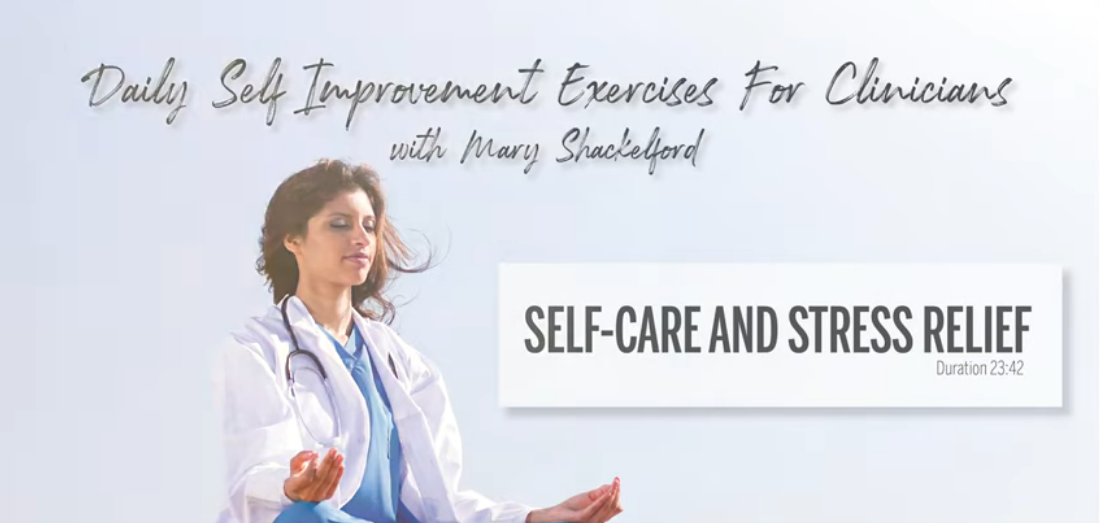Fostering a Culture of Self-Care

Culture is one of the most important tenants of patient safety. Health care entities are adopting many strategies to improve their culture of safety. One aspect of patient safety culture that rarely gets attention is creating a culture of self-care for staff, especially front-line staff that are in constant caring mode with patients and family, often facing “crisis” after “crisis”.
According to the Patient Safety Network, up to 70% of nurses have symptoms of burnout; 30-50% of physicians, NPs and PAs have symptoms of burnout; 86% EMS respondents experienced critical stress; 37% had contemplated suicide and 6.6% had actually tried to take their own life.
These are startling statistics.
These levels of burnout are not sustainable. According to ARHQ “Although it is difficult to determine causal relationships, burnout has been associated with increased patient safety incidents, including medical errors, reduced patient satisfaction, and poorer safety and quality ratings.”
In recent years healthcare organizations have begun to realize the high price they pay for employee burn out and compassion fatigue and are making efforts to address this issue. In fact, IHI and other organizations recognize burnout of health care staff could in fact prevent the achievement of the initial Triple Aim of improved patient experience, population health and reduced cost and are recommending that the Triple AIM framework be expanded to include a fourth aim that focuses on the work life of staff and physicians.
As a quick review, Christine Maslach defines compassion fatigue as “a state of exhaustion in which one is cynical about the value of one’s occupation and doubtful of one’s capacity to perform”. It is frequently refer it to as a secondary trauma because it relates to exposure to suffering. Burnout on the other hand, is defined by the World Health Organization as a “syndrome conceptualized as resulting from chronic workplace stress that has not been successfully managed.”
Unfortunately one of the biggest obstacles in combating or preventing burnout is that many feel ashamed to need help. This feeling of shame is compounded by a culture (both societal and organizational) that doesn’t support slowing down or self-care.
We have included some strategies to help your organization begin to create a culture that supports self-care and well-being of your staff. Many of these strategies are low or no cost.
- Assess your organizations culture of self-care. This is not necessarily about doing a formal survey process specific to a culture of self-care. It is more about having a dialog with staff. Asking staff questions such as, “What does self-care mean to you? How do you practice self-care during the workday? What is needed to create a supportive work environment for self-care? You may be surprised by the responses and the simple changes that can be made to support self-care.
- Create an organizational/department/unit values or mission statement that includes addresses the importance staff self-care. Include training for leadership and managers on burn-out, stress and compassion fatigue so they can identify signs and symptoms early on and help to support staff.
- Expect care for self and each other within units, teams and the organization as a whole. Leaders must demonstrate it as a priority.
- Create a culture that insists staff, especially front-line caregivers, take breaks, including breaks for lunch and/or dinner. Create a culture that supports coverage for each other while taking these breaks.
- Encourage staff to use their accumulated leave time each year.
- Establish supportive post-adverse event processes , like debriefs, to allow involved staff a break to regroup and process the event.
- Ensure staff have opportunities for learning inside and outside the organization. Feeling competent in the ability to do one’s job reduces stress.
- Create a Renewal Room for staff. Renewal rooms are a place staff can go when stressed, post-adverse event, or even during their scheduled breaks. It should be a quiet room with comfortable seating, such as a recliner(s) with soft lighting, and relaxing music. Many Renewal Rooms also include aromatherapy such as lavender, hot tea and other calming amenities. It is important to create the culture to support staff using this space without judgment or guilt. Learn more
CPS has created a series of videos to help organizations and individual health care workers to learn techniques to support self-care, create mindfulness and reduce stress. If your organization is interested in learning more about how you can support your staff in making self-care a priority, please contact info@centerforpatientsafety.org.
.png)
